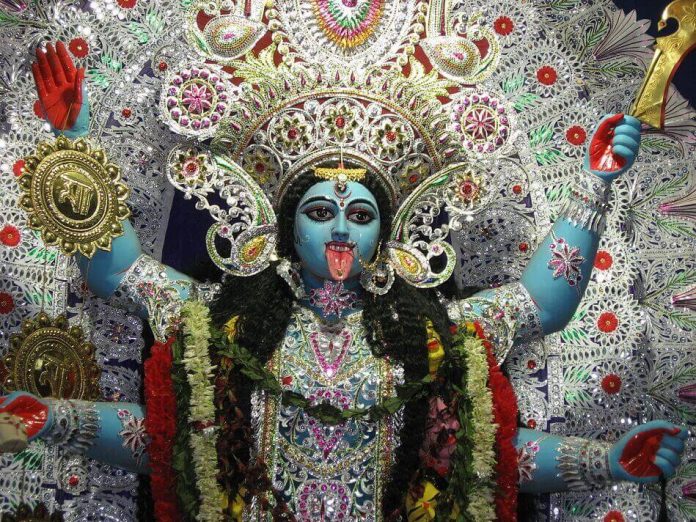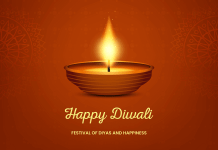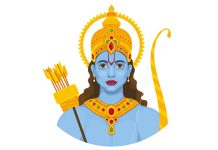
In the cultural tapestry of Hindu festivals, Kali Puja stands as a vibrant and powerful celebration dedicated to Goddess Kali. This annual event, often observed in the eastern part of India, particularly in West Bengal, is a unique manifestation of devotion, rituals, and profound spirituality. In this exploration, we unravel the intricacies of Kali Puja, delving into its origins, customs, and the spiritual essence that defines this awe-inspiring festival.
Origins of Kali Puja:
Kali Puja finds its origins in Hindu mythology, with Goddess Kali being a formidable and revered deity. Goddess Kali, a fierce manifestation of the Divine Mother, finds her roots in Hindu mythology. Legend has it that the goddess emerged from the forehead of Goddess Durga during a battle against the demon Raktabija. With her dark complexion, wild hair, and a necklace of decapitated heads, Kali represents both destruction and protection. Kali Puja is said to commemorate her victory over the forces of darkness.
The Profound Symbolism of Kali Puja
Kali Puja centers around the worship of Goddess Kali, a symbol of time, change, and ultimate reality. Unlike other Hindu goddesses, Kali’s dark complexion and fearsome demeanor represent the raw, primal nature of existence. Symbolically, she embodies the destruction of ego and ignorance, paving the way for spiritual awakening.
Depicted standing on the corpse of the demon Shiva, Kali symbolizes the triumph of time over ignorance. Her multiple arms holding various weapons signify her readiness to protect devotees from all evils. The garland of skulls around her neck represents the cycles of life and death, emphasizing the transient nature of existence.
In essence, Kali Puja’s symbolism urges devotees to embrace change, confront ego, and dispel ignorance. It becomes a transformative journey aligning worshippers with the cyclical nature of the cosmos and fostering an understanding of life’s impermanence. As the flames of devotion flicker, Kali Puja becomes a spiritual path leading devotees toward the light of awareness, dispelling the darkness of ignorance and ego.
Kali Puja: The Night of Power:
Kali Puja is observed on the night of the new moon in the Hindu month of Kartik, typically falling in October or November. This auspicious night, known as ‘Amavasya,’ is believed to be charged with divine energy, making it an ideal time to invoke the powerful presence of Kali. Devotees prepare for the puja by cleaning and decorating their homes, setting the stage for an elaborate worship ceremony.
Preparations and Rituals:
Preparations for Kali Puja begin well in advance, with homes and pandals (temporary structures for worship) adorned with intricate decorations and artistic representations of Goddess Kali. The main ritual involves the consecration of the idol, usually made of clay or other natural materials. Devotees engage in fervent prayers, chanting of mantras, and the offering of various items such as red hibiscus flowers, sweets, and sacrificial animals as symbolic gestures of devotion.
Tantric Influences:
Kali Puja is deeply intertwined with tantric traditions, emphasizing the worship of divine energy through meditation, mantra recitation, and rituals. Tantric practices associated with Kali Puja aim to transcend the dualities of good and evil, embracing the totality of existence. The goddess, with her dual nature of creation and destruction, becomes a focal point for seekers on the path of spiritual realization.
Cultural Extravaganza:
Beyond its spiritual dimensions, Kali Puja is also a cultural extravaganza. Elaborate processions, cultural performances, and artistic displays become integral parts of the celebrations. The streets come alive with the vibrant energy of drum beats, traditional dance forms, and the illuminated ambiance of countless lamps and decorative lights.
Global Celebrations:
While Kali Puja has its roots in West Bengal, its celebration has transcended regional boundaries. In cities across the globe with a significant Bengali diaspora, the festival is observed with fervor. The global diaspora ensures that the essence of Kali Puja resonates far beyond its cultural origins, creating a sense of unity among devotees worldwide.
Modern Relevance:
In contemporary times, Kali Puja has taken on new dimensions while retaining its traditional core. The festival continues to evolve, incorporating modern elements such as artistic innovations, eco-friendly practices, and a heightened awareness of social issues. The timeless message of Kali Puja, emphasizing the transcendence of duality and the awakening of spiritual consciousness, remains relevant in the fast-paced, modern world.
Conclusion:
Kali Puja, with its deep-rooted spiritual significance and cultural vibrancy, stands as a testament to the enduring devotion and dynamism within Hindu traditions. Beyond the fierce exterior lies a celebration that invites individuals to confront their own shadows, embrace the transformative power of the divine feminine, and ultimately, tread the path of self-realization. In the luminous presence of Goddess Kali, devotees find not only a symbol of raw power but also a guiding light on their spiritual journeys.



























































